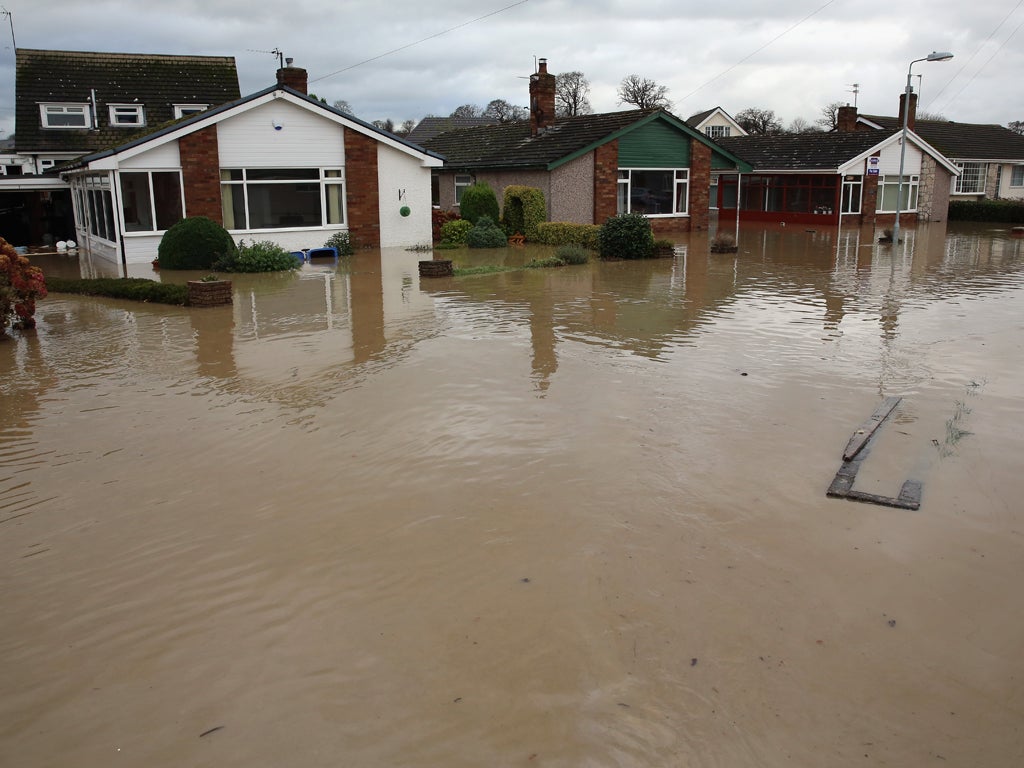Messing with natural habitats only makes flooding worse
Restoring natural habitats could be a good way to reduce the frequency and severity of floods, so why don't insurance companies help pay?


Recent flooding has caused widespread misery, disruption and large-scale economic damage.
One sector that has been hard hit is insurance. Because flooding is becoming more frequent due to climate change, some areas are becoming uninsurable. Some 200,000 properties could soon see withdrawal of flood insurance and talks between government and the Association of British Insurers are yet to reach agreement on how insurance cover might be continued for those properties at highest risk.
Alongside debates on how to maintain insurance cover, another natural focus in the wake of deluges of the kind recently experienced is about the quality and extent of traditional flood defences. All this is fine, but for me there is a piece missing. It relates to both these questions and is about the vital role that could be played by so-called ‘green infrastructure’.
While the risk of flooding can be reduced at least in the short-term through the building of hard defences (such as higher levies and bigger storm drains), approaches that go more with the flow of nature can be both cheaper and more effective. For example, peat bogs on hills store rainwater and release it slowly into streams and rivers. When the bogs are damaged, heavy rain runs off more quickly and can cause problems below.
This is exactly what happened in 2007, when the River Don burst its banks and flooded Sheffield. With TV pictures of people being rescued from rooftops by RAF helicopters, the flooding was truly dramatic. Two years later the powerful floods that devastated Lake District towns, including Cockermouth, were similarly put down to not only heavy rain but also the way the hills above the town had changed, making the flooding much worse. Channels had been cut through peat bogs so as to dry them out for grazing. Water meadows had been drained, and trees had been removed. The effect of all this was to damage the natural sponge and to increase the speed with which water travelled off the hills.
With these and many other experiences in mind, various bodies including conservation groups, water companies and local authorities are beginning to invest in trees and peatland restoration as cost-effective measures to reduce flood risk (and improve water quality). Peat and trees also contain a lot of carbon, so this way of cutting flood risk is also a way to help reduce the amount of carbon dioxide in the air.
There is also growing interest in what has become known as Sustainable Drainage Systems, or SUDs for short. These include areas of green spaces set aside to take rainwater so that it soaks into the ground, rather than running straight off concrete and other hard surfaces into drains where it can lead to flash-floods. Wetland and flood plain restoration can bring similar benefits, by allowing water to spread out and slowing the speed with which it accumulates in watercourses.
The way farmland is managed can also help. For example, soils can hold a lot more moisture when there is a higher level of organic matter. This is the fraction of the soil that is comprised of material that was once alive, such as plant remains, and that is gradually decomposing. If there is more soil moisture then this can slow the rate of run-off after heavy rains.
There is thus every good reason to believe that intelligent land-use decisions can help to reduce the risks arising from more extreme weather, and that this could be a productive focus in planning our response to the ever more dramatic impacts of climate change. There are already some good examples of what can be achieved.
The Wildlife Trusts have a national programme called A Living Landscape. It aims to help wildlife adapt to climate change while at the same time providing benefits for people. The main focus is on large-scale habitat restoration schemes that not only help wildlife, but also reduce flood risk, protect soils and improve water quality.
The Wildlife Trusts point to the example of Toll Bar in Doncaster. In 2007 residents here were flooded out of their homes following unprecedented rainfall. In south Doncaster, however, hundreds of homes that were exposed to the same rainfall didn’t flood. This was because the water ended up at Potteric Carr, Yorkshire Wildlife Trust’s flagship wetland nature reserve. “The floodwaters stayed on the reserve for weeks, gradually soaking into the ground and draining into streams and watercourses”, says the Wildlife Trusts’ Paul Wilkinson.
So as well as making sure insurance is available to as many people as possible, what action might be taken to reduce flood risk through enhancing green infrastructure? A good start would be an official mapping exercise, whereby it would be possible to see where high risk areas lie adjacent to places that could be rendered more able to hold rainwater before it turns into floodwater. Degraded peat lands, areas of once wooded hillside now under the plough, wetlands that have been drained and areas that could be returned to pasture might all offer cost effective routes to reducing flood risk.
In terms of who would pay, that will vary from place to place, depending on who owns the land and how it is managed. Redirected farm subsidies, water company investment, the work of conservation groups and indeed resources provided by the insurance sector itself could all contribute. For example a tiny levy charged on premiums could be used to build an ecosystem restoration fund that could be targeted to reduce flood risk in the most vulnerable areas. Whatever the mechanism, however, it is clear that a very considerable opportunity exists and that we should summon the creativity the make the most of it, not only for reducing flood risk, but to also cutting the carbon in the air and increasing the wildlife that enriches our lives.
Tony Juniper’s new book, What has nature ever done for us?, looks at the economic value of nature and is published by Profile Books in January 2013

Join our commenting forum
Join thought-provoking conversations, follow other Independent readers and see their replies